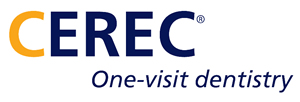Teeth are extracted if they are not restorable or if they have had extensive gum disease. After having a tooth extracted you must look after the area to speed healing and to reduce the risk of infection. Here are some pointers:
- For the first 24 hours, try to avoid eating hot food, don’t smoke, don’t drink any alcohol and try not to disturb any blood clot which may have formed.
- Don’t rinse your mouth for 24 hours after extraction. After that, rinse gently with warm salty water – half a teaspoon of salt in a glass of water is enough.
- Brush your teeth as normal to keep your mouth as clean as possible.
- You may feel some small pieces of bone work their way out of the socket – don’t worry, this is perfectly normal.
- There may be some swelling and a bit of discomfort in the first 2-3 days. If you need to, take regular painkillers such as ibuprofen or paracetomol.
- If you feel pain a few days after the tooth has been removed, the blood clot may have broken down leaving an empty hole in the gum. This is called a ‘dry socket’ and will need to be looked at by your dentist. Make an appointment and the dentist will pack the wound to ease your discomfort.
- If there is any bleeding, your dentist may have given you some gauze to place onto the area where the tooth has been removed – if not, a clean cloth handkerchief will do just as well (but not a paper tissue). Roll it into a small firm pad large enough to fit over the gap (probably around 1cm by 3cm).
- Sit up and gently clear away any blood clots around the gap using the gauze.
- Put a clean pad over the gap (from tongue side to cheek side) and bite down on it firmly for 20 minutes.
- Take the pad off and check whether the bleeding has stopped. If not, apply a fresh pad and contact us.












